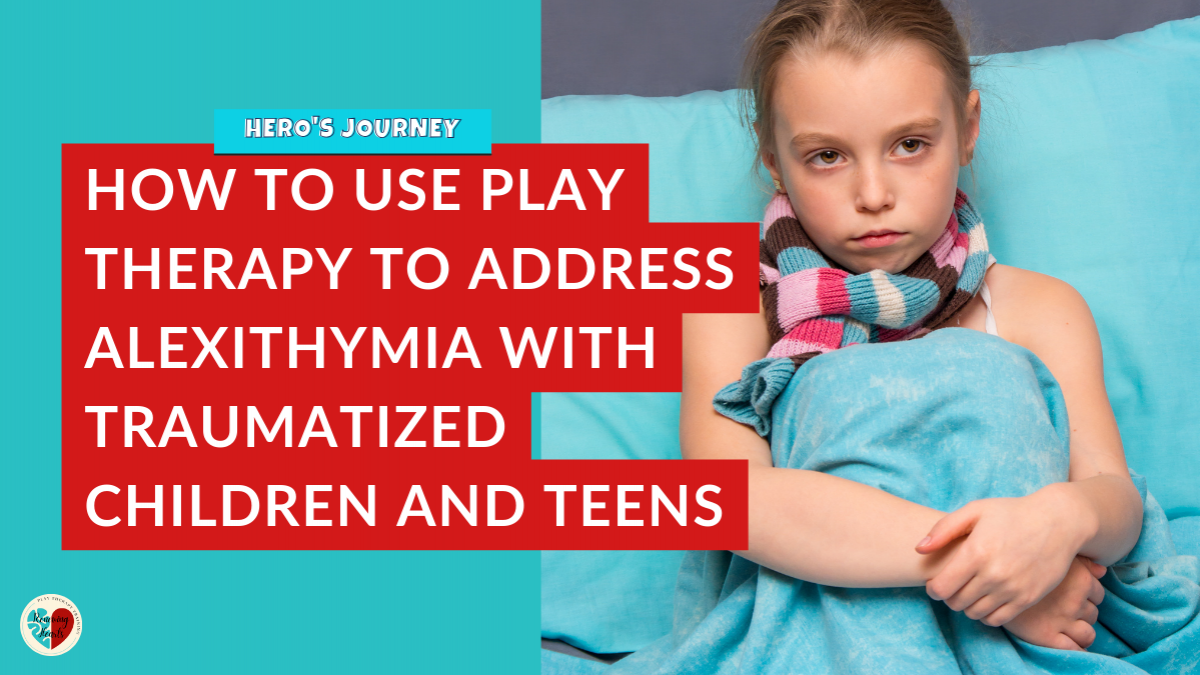How to Use Play Therapy to address Alexithymia with Traumatized Children and Teens

Have you heard of a condition called Alexithymia?
Probably not because most mental health professionals are not familiar with this term.
I wasn’t until I came across the term while looking at research about trauma.
What does Alexithymia have to do with trauma and working with children and teens in play therapy?
That’s an excellent question!
Alexithymia is a condition that can be found in people with depression, PTSD, schizophrenia, and autism.
Have you ever had a client in sessions who repeatedly could not identify their emotions no matter how much therapeutic rapport and safety you created in sessions?
It’s possible they may have Alexithymia - inability to identify their emotions and experiencing their emotions.
A group of researchers uncovered a connection between adults with Alexithymia and childhood emotional abuse, emotional neglect, and physical neglect.
As child and adolescent mental health professionals and play therapists imagine the benefit to children who have experienced neglect if they were able to receive early intervention using strategies that addressed possible Alexithymia.
That’s a game changer in my mind!
Below I’ll discuss the finding of this research and how we can incorporate this groundbreaking information into play therapy when working with traumatized children and teens.
1. Defining Alexithymia:
At its core, Alexithymia denotes an inability to identify and express emotions. But it's more than just struggling to put feelings into words; it extends to a difficulty in recognizing social cues and understanding emotions within the context of relationships. Imagine sitting across from a client, guiding them through emotional exploration, only to be met with a blank stare because they simply can't connect with their inner world. This could be a sign of Alexithymia.
2. The link with Childhood Trauma
Recent research using meta-analysis has shed light on the profound connection between childhood trauma and adult Alexithymia. Childhood emotional abuse, neglect, and physical neglect emerge as strong predictors of Alexithymia in adulthood. This insight is invaluable for therapists, especially when working with clients who have experienced trauma. It prompts us to delve deeper into our clients' histories, recognizing the impact of emotional neglect and abuse alongside more overt forms of trauma.

3. The role of Play Therapy
But how can therapists intervene effectively? Enter play therapy, a powerful tool for early intervention and healing. By creating a safe and supportive environment, therapists can guide clients, especially children and adolescents, in recognizing, labeling, and expressing their emotions. Through play therapy activities and expressive arts, clients can bypass verbal barriers and delve into their emotional world in a non-threatening way. This approach not only provides alternative avenues for communication but also fosters a sense of empowerment and self-discovery.
In essence, understanding Alexithymia goes beyond mere terminology; it's about recognizing the profound implications it holds for therapeutic practice. By acknowledging the link between trauma and emotional deficits, therapists can pave the way for healing and transformation in their clients' lives.
Categories: : Play Therapy, Podcast, Trauma
 Cathi Spooner
Cathi Spooner 
